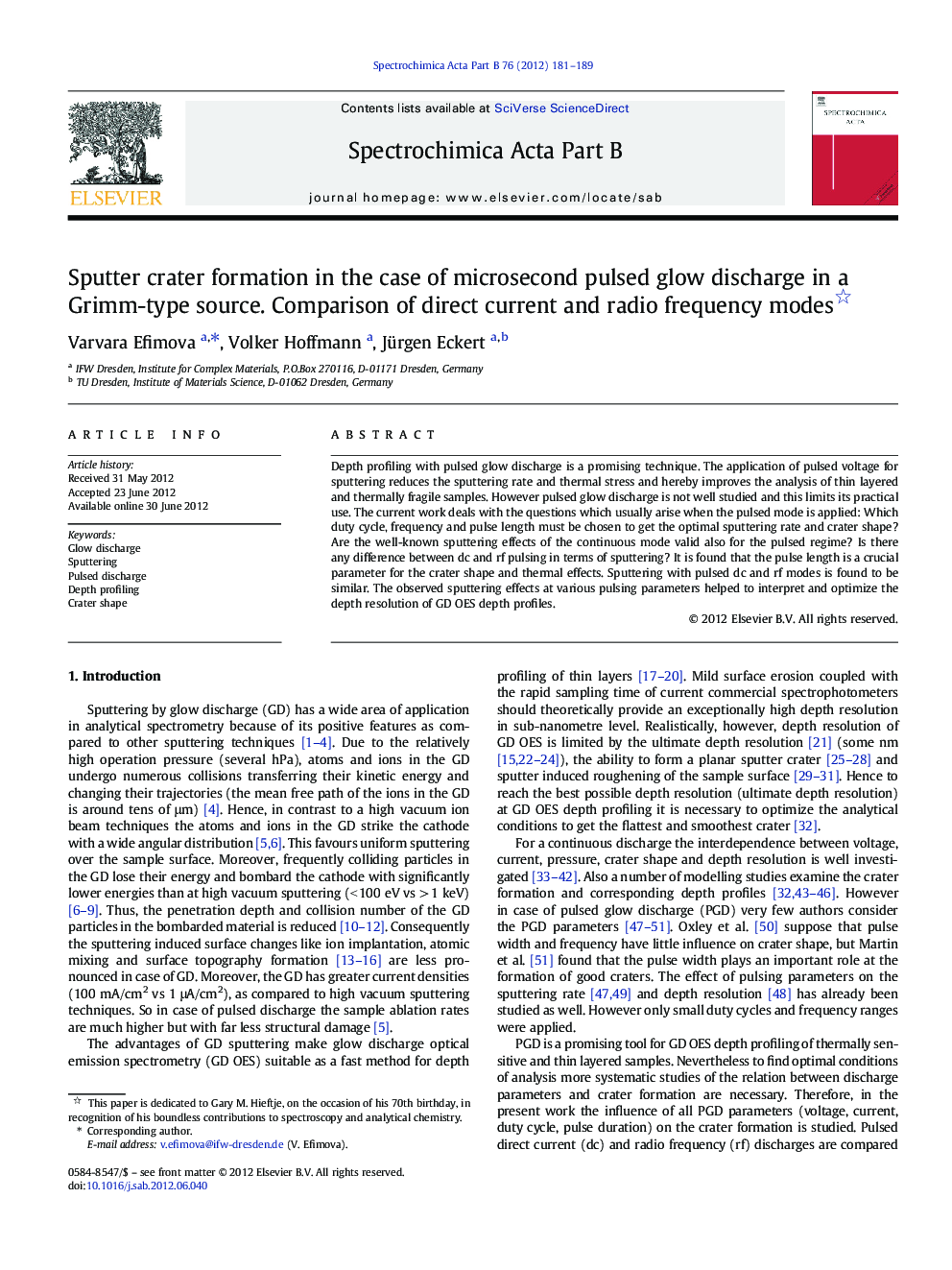| Article ID | Journal | Published Year | Pages | File Type |
|---|---|---|---|---|
| 1239819 | Spectrochimica Acta Part B: Atomic Spectroscopy | 2012 | 9 Pages |
Depth profiling with pulsed glow discharge is a promising technique. The application of pulsed voltage for sputtering reduces the sputtering rate and thermal stress and hereby improves the analysis of thin layered and thermally fragile samples. However pulsed glow discharge is not well studied and this limits its practical use. The current work deals with the questions which usually arise when the pulsed mode is applied: Which duty cycle, frequency and pulse length must be chosen to get the optimal sputtering rate and crater shape? Are the well-known sputtering effects of the continuous mode valid also for the pulsed regime? Is there any difference between dc and rf pulsing in terms of sputtering? It is found that the pulse length is a crucial parameter for the crater shape and thermal effects. Sputtering with pulsed dc and rf modes is found to be similar. The observed sputtering effects at various pulsing parameters helped to interpret and optimize the depth resolution of GD OES depth profiles.
► The validity of the Boumans equation for pulsed rf and dc glow discharge is shown. ► The influence of the pulsing parameters on the sputter crater is ascertained. ► The dependence of the depth resolution on the pulsing parameters is shown. ► Rf and dc pulsed discharges are found to be similar in terms of sputtering.
